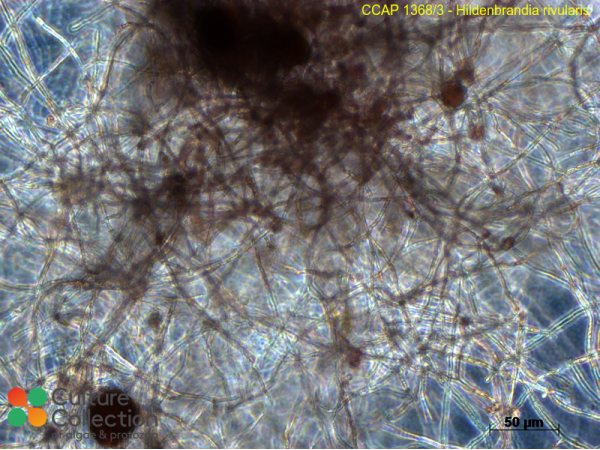Note: for strains where we have DNA barcodes we can be reasonably confident of identity, however for those not yet sequenced we rely on morphology
and the original identification, usually made by the depositor. Although CCAP makes every effort to ensure the correct taxonomic identity of strains, we cannot guarantee
that a strain is correctly identified at the species, genus or class levels. On this basis users are responsible for confirming the identity of the strain(s) they receive
from us on arrival before starting experiments.
For strain taxonomy we generally use AlgaeBase for algae and
Adl et al. (2019) for protists.
| Attributes | |
| Authority | (Liebmann) Agardh 1852 |
| Isolator | Ott (1964) |
| Collection Site | smooth pebbles from limestone spring Edwards Limestone, Landa Park, New Braunfels, Texas, USA |
| Notes | Isolation: the crustose thalli were washed well with the aid of a cotton swab and then the thalli were scraped off the rock with a razer blade and further fragmented, before plating on agar then isolated with Pasteur pipette;This macroalgal culture contains bacteria and probably other organisms in low numbers, we are happy to provide further info on specific strains if you contact us |
| Axenicity Status | Bacteria and other organisms present |
| Area | North America |
| Country | USA |
| Environment | Freshwater |
| GMO | No |
| Group | Macroalgae |
| In Scope of Nagoya Protocol | No |
| ABS Note | Collected pre Nagoya Protocol. No known Nagoya Protocol restrictions for this strain. |
| Collection Date | 15/9/1964 |
| Original Designation | Clone No. 3040 |
| Pathogen | Not pathogenic: Hazard Class 1 |
| Strain Maintenance Sheet | |
| Toxin Producer | Not Toxic / No Data |
| Type Culture | No |
| Taxonomy WoRMS ID | 146400 |
CCAP 1368/3
Hildenbrandia rivularis
- Product Code: CCAP 1368/3
- Availability: See Availability/Lead Times



